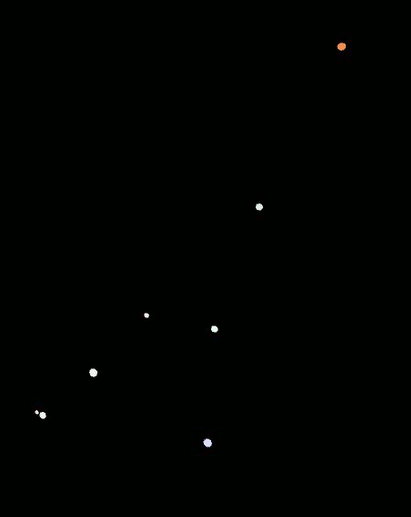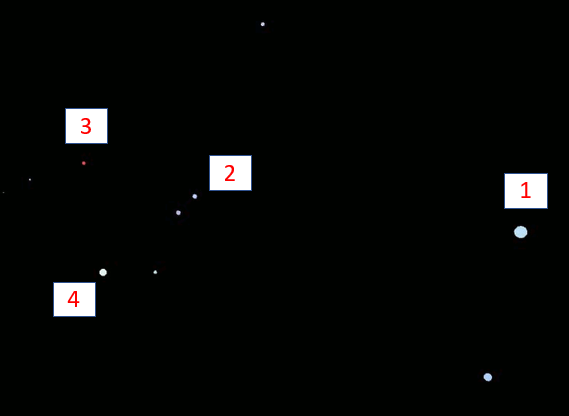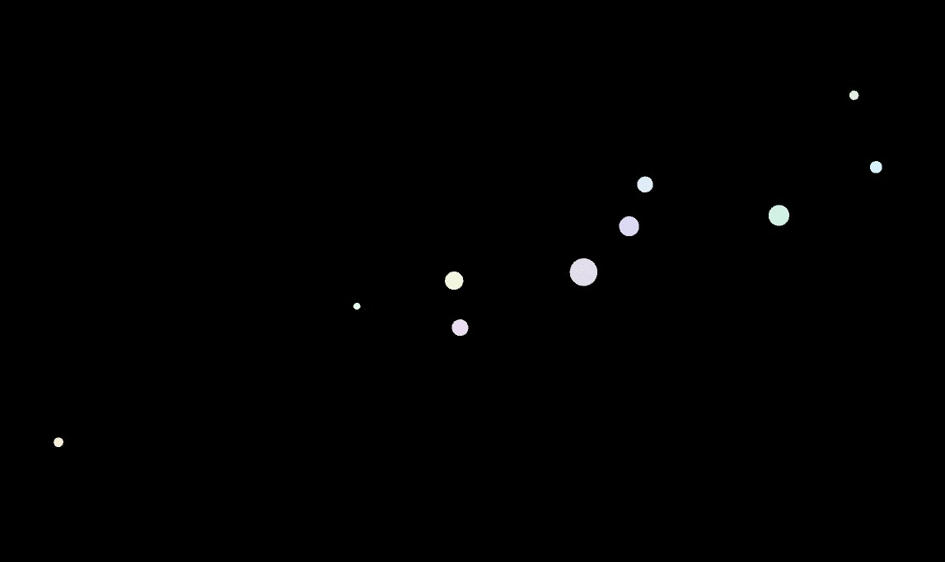A new look at three familiar features
There are three features in the night sky which most people can recognise : the Plough, Orion’s Belt and the Pleiades. But what if you could look at them from a different viewing point or many years into the future? Would they still be so recognizable?
FAS member Danny Thomas has written a program which enables the user to move their viewing point or to see thousands of years in the future and he showed us many examples in a recent talk. I’ve selected the three features named above to highlight the information which his program illustrates. In most cases, the cold facts are known … but seeing them revealed before your eyes is something else!
The Plough : in 190,000 years time

Image Credit Danny Thomas
Aspects of the Plough still look vaguely familiar. This is because the five central stars are all part of the Ursa Major Moving Group and are all moving at roughly the same speed in the same direction, suggesting a common origin, possibly in an open cluster. In the image, they have moved to the bottom left, keeping roughly the same distance from one another . The other two stars, Dubhe (top right) and Alkaid (at “6 o’clock”) have moved towards the top right, clearly not part of the same group
Orion from a different viewing point
For the Orion example, Danny put Orion in a “box” and then rotated that box around to show the constellation from different viewing points. The image I’ve chosen is with a viewing point almost “behind” the constellation. Can you work out which star is which in this image?

Image Credit: Danny Thomas
Star 1 is Alnilam, which from our normal point of view is the middle star of Orion’s Belt. It is over 1300 light years from the Earth and I’ve chosen the viewing point that shows it, a blue supergiant, at its largest.
The pair of stars labelled 2 are its companions in Orion’s Belt, both around 800 – 900 light years from Earth, so in reality very distant from Alnilam in space as clearly illustrated here. That was quite a surprise for me!
Star 3 is the only one that is easy to recognize because of its red colour. It is Betelgeuse – not so impressive in this view. At only about 600 light years from Earth, it is far away from Alnilam, looking very faint.
Star 4 is Rigel. It looks significantly brighter than Betelgeuse in this view, being somewhat closer in distance to Alnilam and having an absolute magnitude of -6.69 against Betelguese’s of -5.14
And finally – the Pleiades sideways on
The Pleiades are an open star cluster, so whichever way you look at them, they are still closely grouped with no great variation in brightness. We often refer to the Pleiades as the Seven Sisters, even though there are ten named stars in the group; Danny allowed for all of them.

Image Credit: Danny Thomas
Thank you, Danny for another look at your intriguing project. Very impressive!
For more information about Danny’s program, please follow this link to an earlier talk which gives more details
https://www.farnham-as.co.uk/constellations-in-3d-by-katherine-rusbridge/
General information on stars in Orion
https://en.wikipedia.org/wiki/Orion_(constellation)#Bright_stars
Data on distance and absolute magnitude of Rigel and Betelgeuse
https://web.pa.msu.edu/people/horvatin/Astronomy_Facts/brightest_stars.html
Talk by Danny Thomas
Post by Katherine Rusbridge
July 2022
